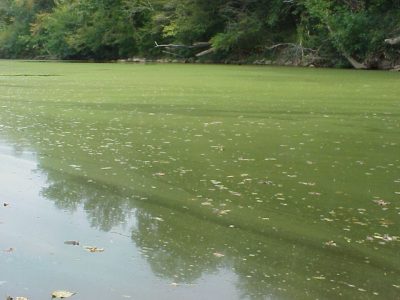RALEIGH – Though state health officials consider the bloom low risk for acute health effects if exposed, the state Division of Water Resources recommends avoiding an algal bloom on the east side of the Chowan River because of the toxin microcystin, a type of cyanobacteria.
There have been no reports of adverse health effects associated with this algal bloom. Currently low risk, what causes the toxin production by cyanobacteria is not well understood and can quickly change.
Supporter Spotlight

DEQ’s Estuarine Monitoring Team responded July 17 to a reported algal bloom near Arrowhead Beach in Edenton, the Department of Environmental Quality announced Friday.
Preliminary results indicate that the bloom is able to produce microcystin but levels have been observed to be between 5 to 10 micrograms per liter, which is considered low risk according to World Health Organization, or WHO, guidelines.
State environmental officials have been monitoring several blooms in the Chowan River since May.
State health officials routinely encourage the public to avoid contact with large accumulations of algae and suggest the following steps to safeguard children and pets from any algal bloom:
- Keep children and pets away from water that appears bright green, blue, discolored or scummy.
- Do not handle or touch large mats of algae.
- Avoid handling, cooking or eating dead fish that may be present.
- If you come into contact with an algal bloom, wash thoroughly.
- Use clean water to rinse off pets that may have come into contact with an algal bloom.
- If your child appears ill after being in waters containing an algal bloom, seek medical care immediately.
- If your pet appears to stumble, stagger or collapse after being in a pond, lake or river, seek veterinary care immediately.
For more information on potential health effects from algal blooms, visit the N.C. Division of Public Health’s website. To learn more about algal blooms in the state, visit the Division of Water Resources’ website.







